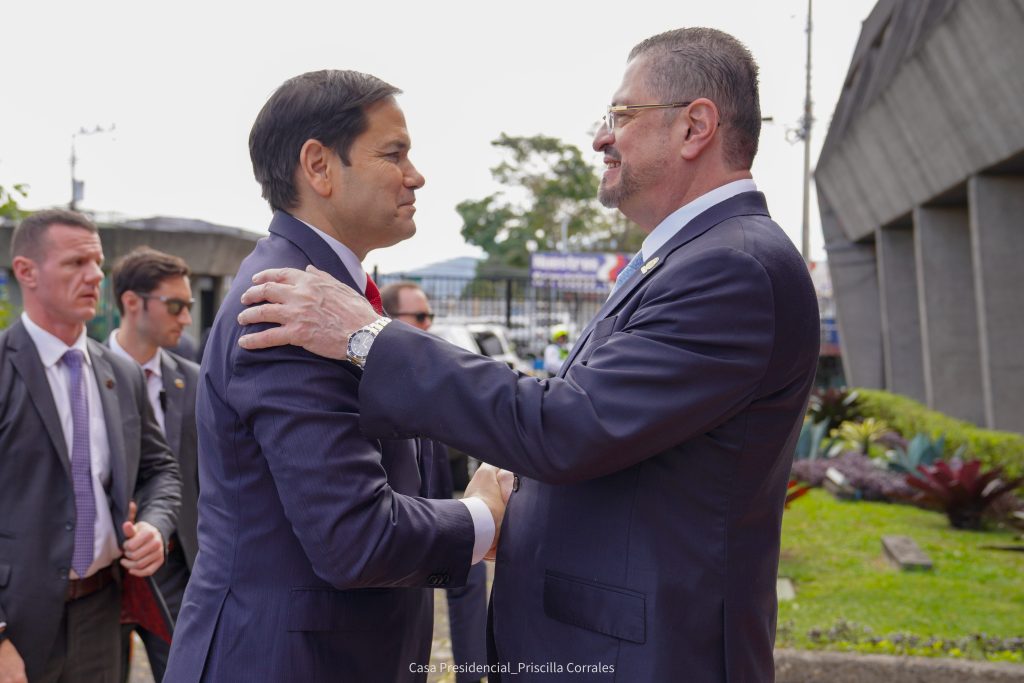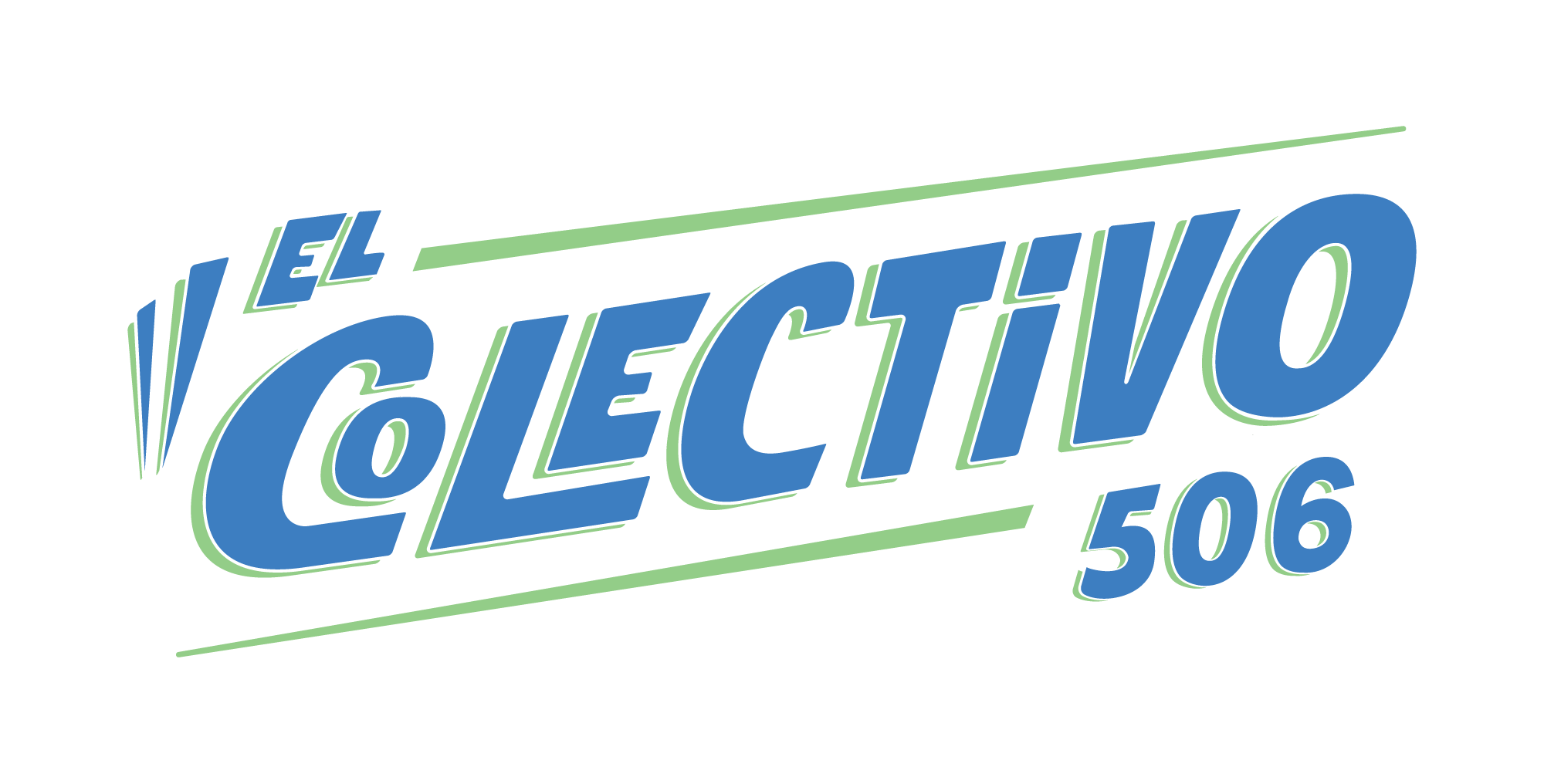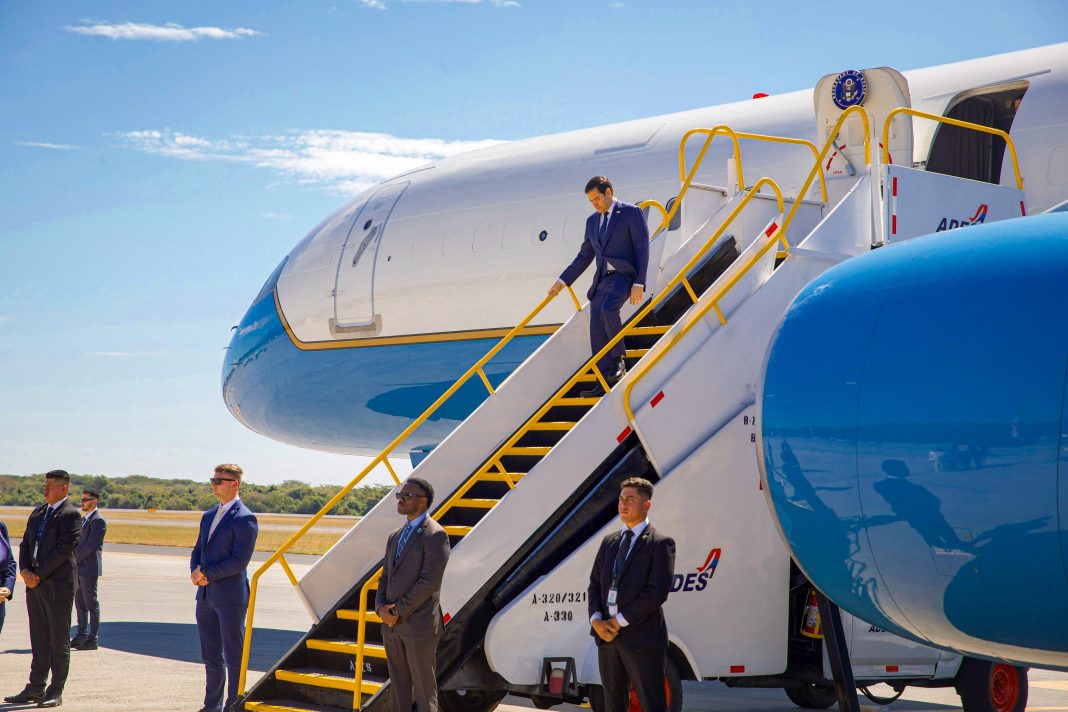Three journalists reflect on our experiences during the visit of U.S. Secretary of State Marco Rubio to our respective countries—Panama, El Salvador, and Costa Rica—in February 2025.
Panama City, Feb. 2, 10:15 AM
Old wounds, new protests
“Panama is not for sale! One territory, one flag! This country is not for sale!” These were some of the slogans on protesters’ signs in response to statements by U.S. President Donald Trump and the arrival in Panama of Secretary of State Marco Rubio. The peaceful march could not reach the Las Garzas Presidential Palace, where Rubio met with President José Raúl Mulino, since several sections had been closed by the National Police and members of the Crowd Control Unit.
Anger was visible on the faces of both teenagers and adults. Trump’s misguided comments about the Panama Canal—on several occasions, including his inaugural address on Jan.20—were perceived as a threat to national sovereignty, a threat Panamanians said they would not overlook. Trump made his intentions clear: to recover the Panama Canal at any cost, arguing that China has been interfering in canal affairs. This Monroe-era rhetoric, very much in the style of the “Big Stick,” has used arguments out of context to justify the unjustifiable.
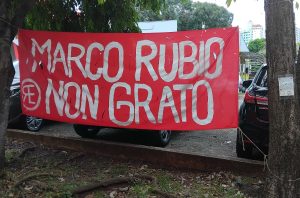
These threats have reopened old wounds, wounds that are still painful in the memory of an entire nation. The Panama Canal was built by the blood of thousands of Panamanian, Jamaicans, Chinese, and French workers who, seeking a better future, grappled not only with cruel terrain but also with a system that despised them. To expect it to return to “gringo” hands would be not only the deepest mockery to those who gave their lives fighting for a sovereign territory free of any foreign interference, but also the biggest affront that a people can experience.
The streets were filled with Panamanian flags. Rag dolls with the faces of Trump and Rubio were burned, as well as the U.S. flag. The mood was heated.
Rubio’s plane landed not at Tocumen International Airport, but at the Panama Pacifico Airport, located on what was the former Howard military base, on Saturday, Feb. 1 around 8:35 pm. He was received by his Panamanian counterpart, Javier Martínez Acha, Foreign Minister of Panama, and a group of officials from the U.S. Embassy in Panama, who had been waiting at the airport since early in the morning. It was a short welcome: the protocol greetings and a brief, pleasant conversation.
There were last-minute changes to the agenda. The interview with President Mulino, scheduled at the Las Garzas Presidential Palace the next day at 1 pm, was moved up to 10:15 am. Rubio even took time to attend the Eucharist at the Church of La Merced before his meeting with Mulino. Upon leaving the Church, he posed for photos and lifted the children of parishioners in his arms.
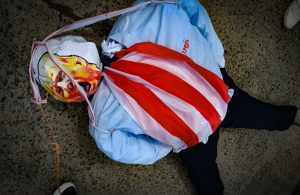
The meeting was held behind closed doors, but we know that the main points on the official agenda were China, the Panama Canal, and immigration. In a press conference after the meeting, President Mulino said: “The sovereignty of Panama is not in question. That is very important, and I explained it in detail [to Rubio]… The channel is operated by our country and will continue to be that way.”
However, there are those who argue that the attitude of the Panamanian president has not been as firm and decisive as expected. On that same day, Panama decided not to renew the understanding agreement that it signed with China in 2017 within the framework of the so-called Silk Road. For many, this was an act of servility. There is concern that Panama will give in to other whims of the new administration.
Nancy Pretto, independent journalist, Panamá
San Salvador, Feb. 6, 10:33 am
From shithole to reliable partner: The Trump and Bukele administrations’ unexpected relationship
Marco Rubio’s plane lands at El Salvador International Airport under an intense sun. He is received by the Salvadoran Foreign Minister Alexandra Hill Tinoco in an official ceremony with the usual formality: soldiers in impeccable dress, carpet, a short walk appearing before the national and international press. It is the type of reception reserved for a key ally, but the images of his arrival contrast with what would come later. Because later, when the official visit takes on a more relaxed pace, Rubio and President Nayib Bukele appear together in another scene: facing the sunset over Lake Coatepeque, in a carefully produced image.
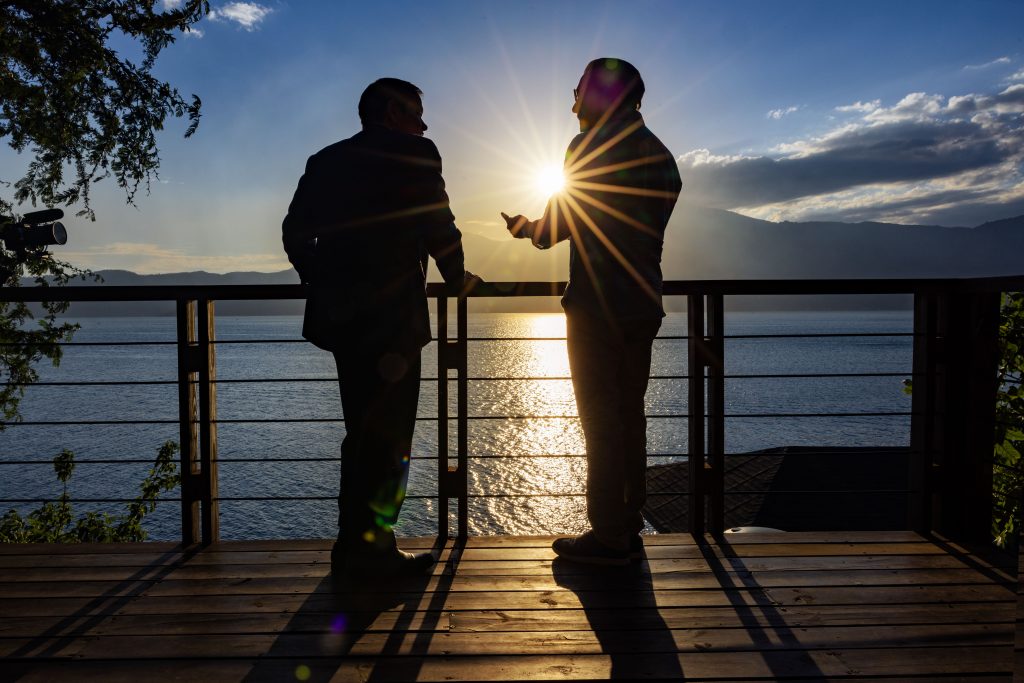
It is not the first time that the narrative changes along with the daylight. The image of Rubio and Bukele on the lake railing has a clear message: the relationship between these administrations is strong. But one look back reveals what’s curious about this closeness. In 2018, Donald Trump called El Salvador a “shithole,” a country not worth paying attention to except to curb migration. Years later, in the midst of presidential campaign, Trump harshly criticized Bukele’s security policy: “There is a country that I like a lot, the president is very popular for being a good shepherd of his country, his crime is going down, he says that he trains them and I have been reading this for two years and we said: ‘let’s see what it is about’ and I realized that he is not training them, but rather he sends these criminal types, traffickers, prisoners, to the United States. He doesn’t say it, he tries to convince everyone that he does a wonderful job.”
Now, just three days after Trump’s return to the White House, Bukele has been one of the first to call him. The official website of the US presidency published a—very brief—statement about the conversation, mentioning cooperation on security and migration.
“Today, President Donald J. Trump spoke by telephone with the President of the Republic of El Salvador, Nayib Bukele. Both leaders discussed the possibility of working together to stop illegal immigration and put an end to transnational gangs like the Tren de Aragua. President Trump also praised President Bukele’s leadership in the region and the example he sets for other nations in the Western Hemisphere.”
End of the statement.
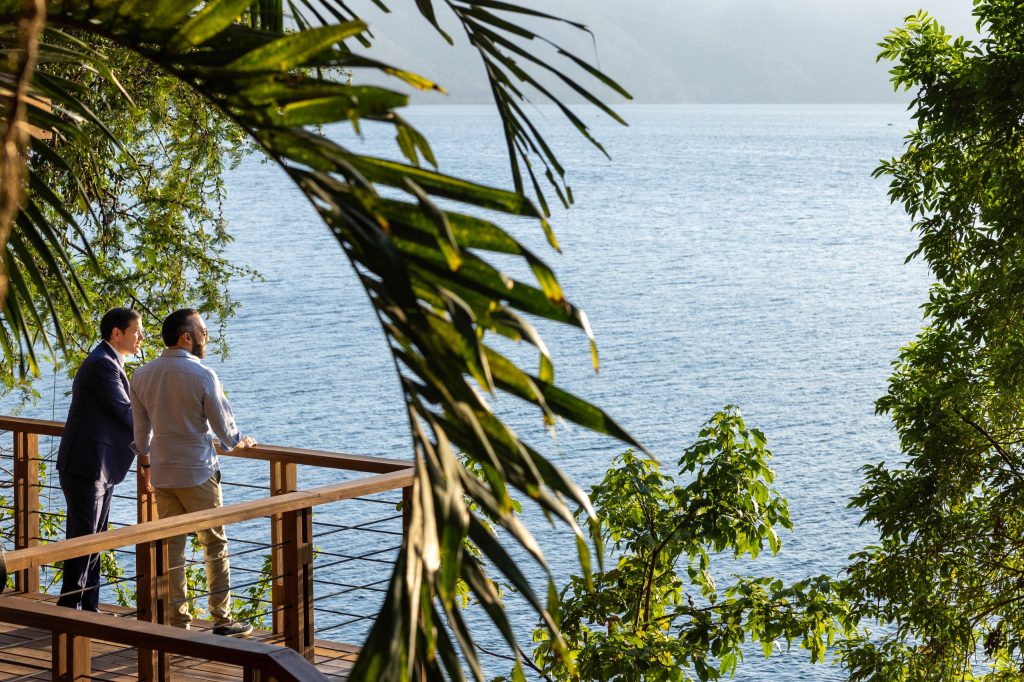
Nothing about past criticism. Nothing about the frozen USAID funds that pause important programs in El Salvador. Nothing about the Salvadorans who will be left without support. Nor anything about those who crossed the border in search of opportunity, including those who, from the diaspora, financed Bukele’s campaign. Nothing about those in the United States who wear his face on t-shirts and support him unconditionally, even traveling to El Salvador at election time to shore up his power as the self-proclaimed “coolest dictator in the world.”
In the day’s meetings, one of the key points was Bukele’s proposal to receive criminals deported from the United States, including American citizens, in the Tecoluca megaprison. The CECOT (Terrorism Confinement Center), with capacity for 40,000 inmates, has become a symbol of the Salvadoran president’s security model. Human rights organizations have denounced abuses inside the prison, but in Washington the narrative is different: Bukele has managed to control the violence, and now offers his infrastructure to manage the American prison problem.
The word outsourcing remains floating in the air. Outsourcing the US prison system in El Salvador is an idea that would have been unthinkable under other circumstances.
The day progressed between high-level meetings and strategic agreements. Foreign Minister Alexandra Hill Tinoco and Marco Rubio signed a Memorandum of Understanding on Strategic Civil Nuclear Cooperation. The document establishes a framework for the development of nuclear infrastructure in El Salvador, the strengthening of regulatory capacities and the exploration of joint research projects with the United States.
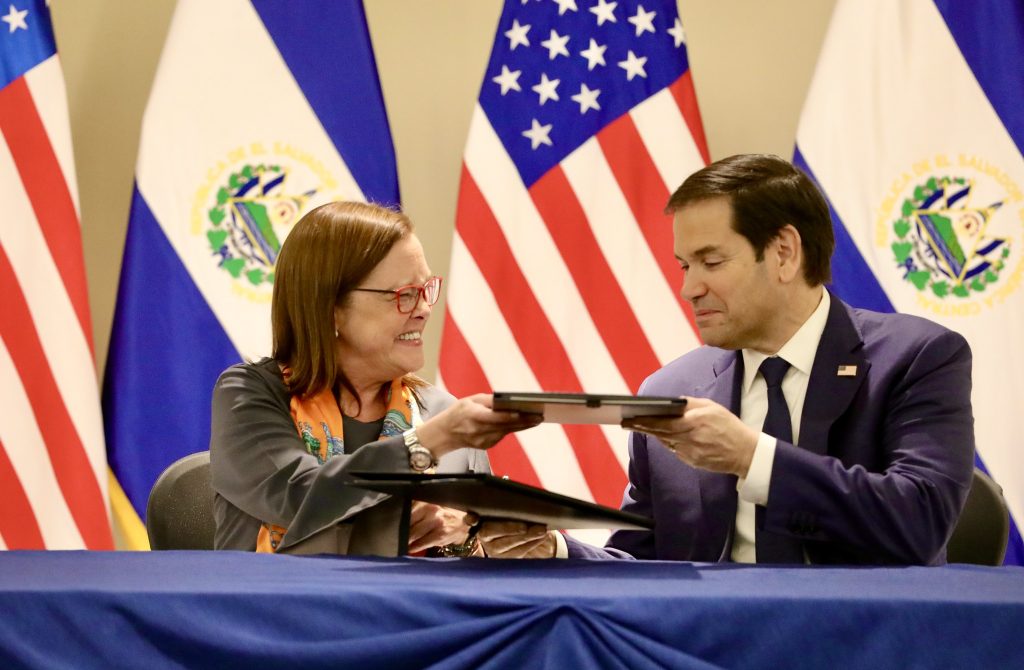
The agreement arises from a law expressly approved in the Legislative Assembly, without public consultation or further debate. Until a few months ago, the possibility of nuclear energy in El Salvador was not on the national agenda. However, with the ruling majority in Congress, the issue went from nothing to becoming state policy. Salvadorans still do not have clarity about what exactly this decision entails, what costs it will have or what risks it poses for the country. While the government presents it as a step towards energy diversification, the lack of information leaves more questions than certainties.
Once the official acts were over, Rubio abandoned the formality of the protocol and went to Bukele’s residence. There was no press or prepared speeches. The images that circulated afterwards show him shaking hands in a more relaxed environment, like someone visiting an old friend. A day that began with documents and diplomacy ended in the intimacy of a private dinner.
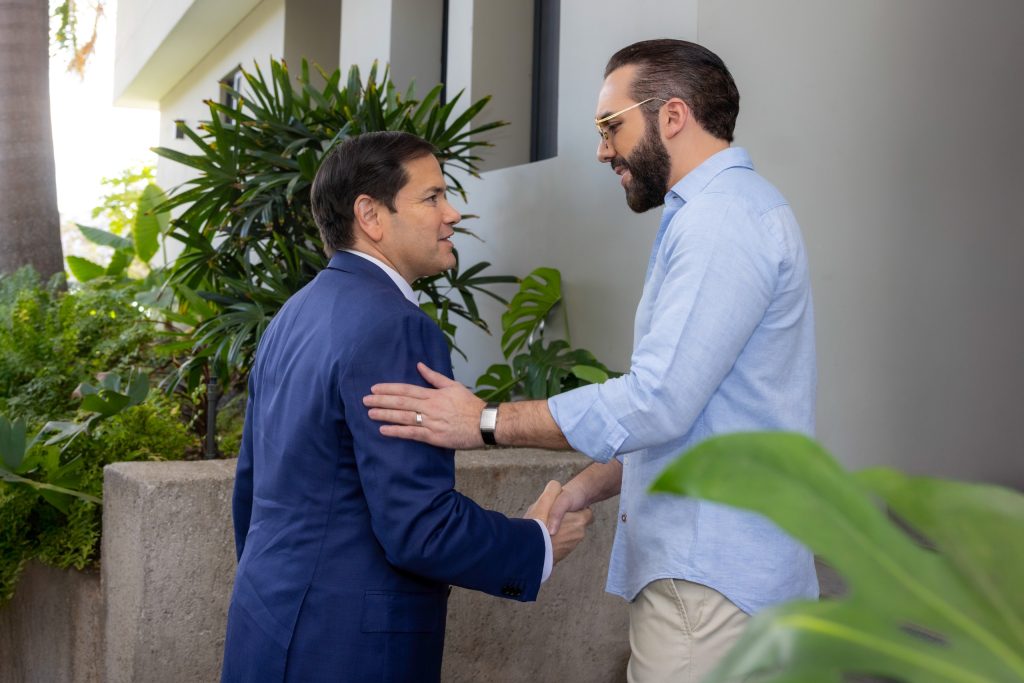
Washington and San Salvador sign agreements. The statements speak of strengthened cooperation. But in the ranks of those seeking employment, in the homes that depended on funds now frozen, on the corners where the deportees get off the plane with nothing on their backs and without answers, the question remains unanswered in the notebook of the independent press, which is relegated without a call for these meetings: and for the Salvadoran population, what is really changing?
Adriana González, Proyecto Lava
San José, Costa Rica, Feb. 4, 10:45 am
Towards leaders whose power is less ‘diluted’
Costa Rica’s presidential offices perch on the second floor above a rather strange assortment of indoor pools; the assembled press watched from below as Rubio descended the concrete ramp next to President Rodrigo Chaves. (In contrast to his previous visit, to El Salvador, journalists here were allowed to see Rubio in person during their press conference.) The 62-year-old economist shot to power, rather than rose, with a brand-new party in the 2022 elections following his departure from the World Bank, shortly after multiple sexual harassment accusations were filed against him.
As president, he has rallied against institutions that he and his supporters say are ineffective or do not represent them—including traditional media organizations and the Legislative Assembly. He has repeatedly proposed unconstitutional measures that are immediately or eventually vetoed, including an effort to eliminate protections for the country’s many refugees. The week before Rubio’s visit, his government announced the elimination of a long-standing sex education program in the country’s schools, and a proposal to increase prison sentences for women who have abortions.
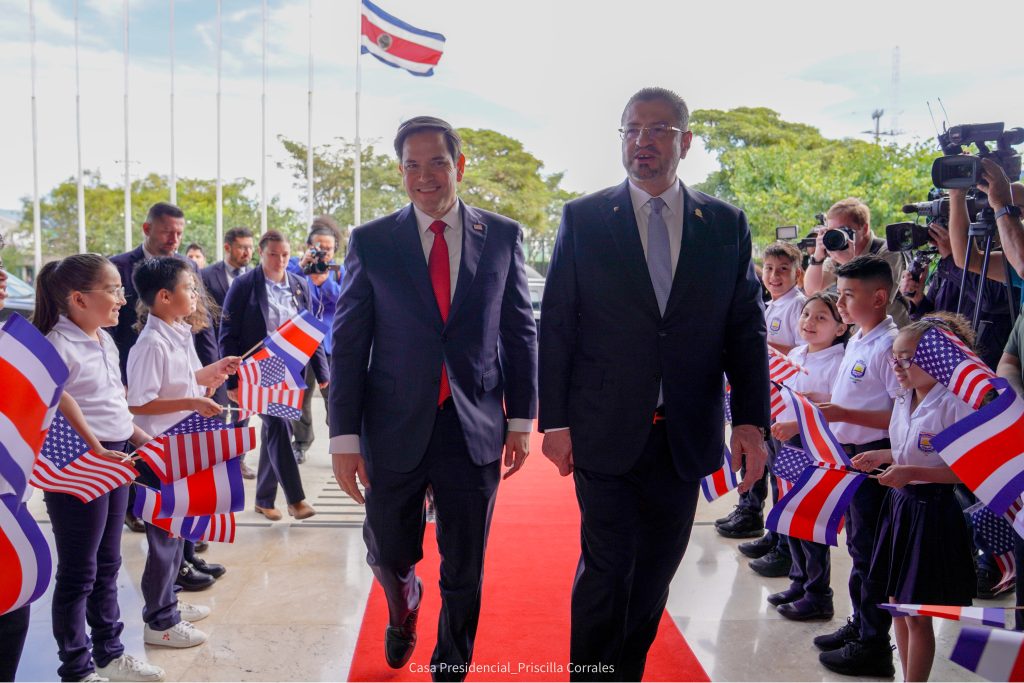
In 2023, he hosted Nayib Bukele with great fanfare, taking him to visit a Costa Rican prison to ask for his feedback and giving him an award. Chaves said at the time: “El Salvador, under the leadership of President Bukele, has demonstrated the need of the people, in key historical moments, not to excessively dilute the power of its leaders.”
A CID-Gallup poll last month showed that he is the most popular Costa Rican president in 44 years.
The kids waving Costa Rican and U.S. flags upon Rubio’s arrival were long gone by the time the two leaders took their places at the podium. With his typical pleasant blandness, Rubio ticks off his talking points, first in Spanish, then in English: 5G, cybersecurity, migration. Costa Rica abolished its army in 1948. Rubio promised a significant increase in aid to Costa Rica—including presence within the country of the DEA, FBI and biometric systems—to help Costa Rica combat drug trafficking and terrorist migrants “from Africa and the Middle East… en route to the United States.”
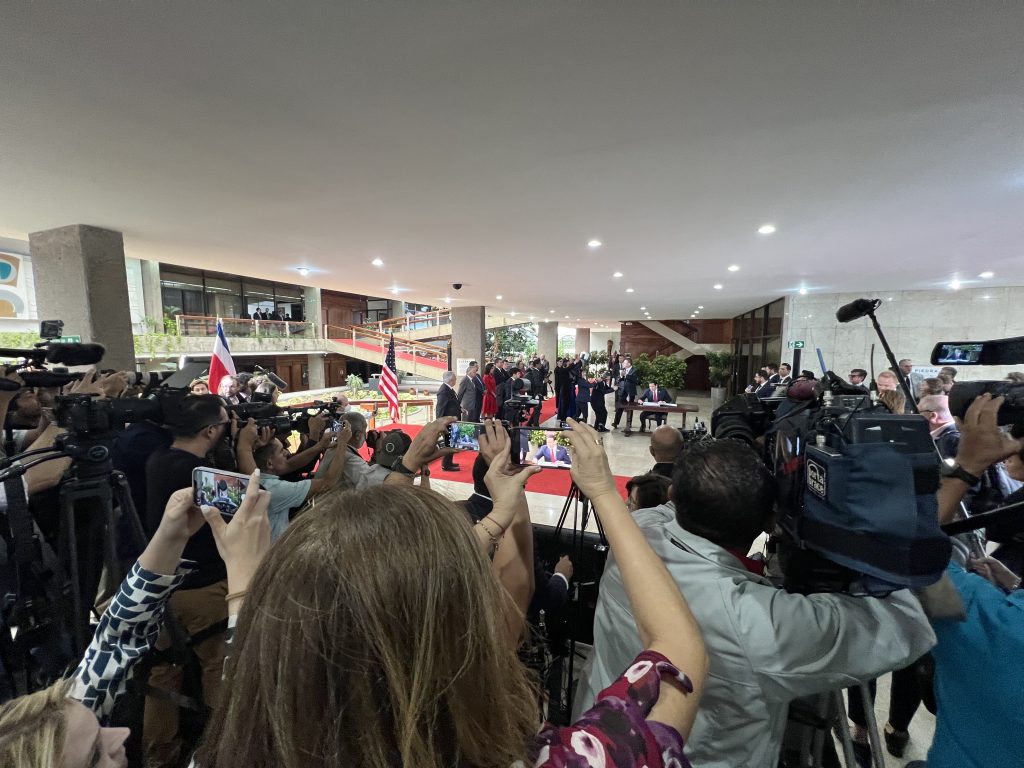
A Washington Post reporter asked for Rubio’s response to Bukele’s offer to incarcerate U.S. citizens in Salvadoran prisons. Rubio’s affect changed noticeably; he looked very pleased, almost incredulous. “We have to study it. There are obvious legalities involved; we have a Constitution. But it’s a very generous offer. No one has ever made us an offer like that before, to outsource [prisoners] at a fraction of the cost. It’s an incredible offer.”
His mood tightened when he was asked about the impact of the funding freeze at USAID, an agency Rubio had announced he was heading the day before, and that was slated for closure at the time of the press conference according to a rash of headlines in the United States. “Foreign aid is not charity,” he said. “Every dollar we spend, as long as I’m Secretary of State… will be a dollar that promotes our national interest… I don’t know how we could be more clear about this.”
The reporter asked Chaves how he felt about the cuts and the impact on his country. In Costa Rica—which, according to UNHCR, was home on Sept. 30, 2024 to 233,934 “people in need of international protection,” including asylum seekers, refugees, and the stateless—reports have emerged of shelters closing down, though it is hard to track because some organizations appear to be keeping quiet in case funding can be restored. Chaves didn’t answer this question. With broad smiles, we were dismissed.
As I made my way out, I crossed paths with a Costa Rican photojournalist I know, sitting at the edge of one of the little pools as TV reporters talked into cameras all around us. We shrugged at each other, a little grimace instead of a greeting.
He says: “These are going to be very hard years.”
Katherine Stanley Obando, El Colectivo 506
